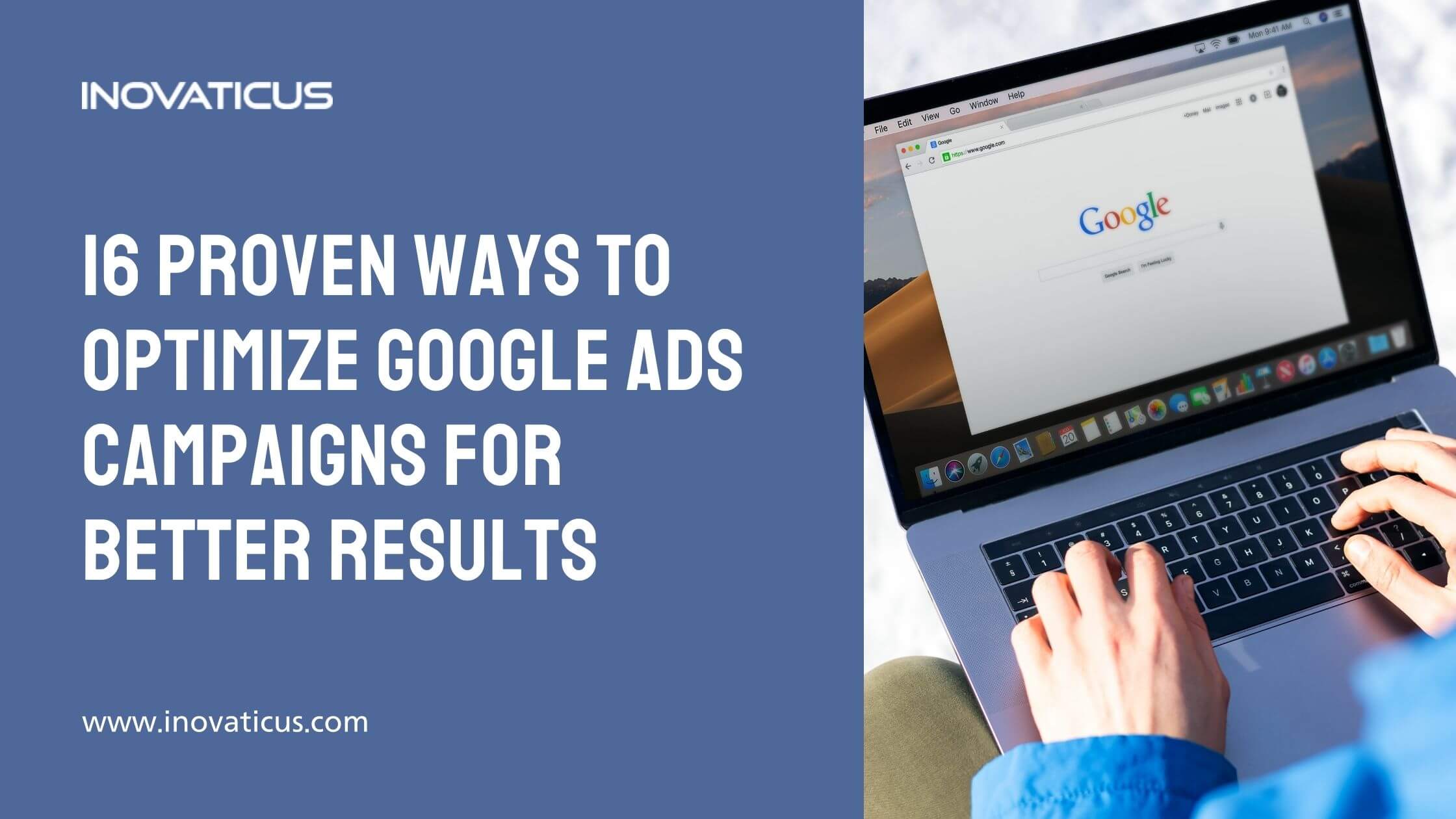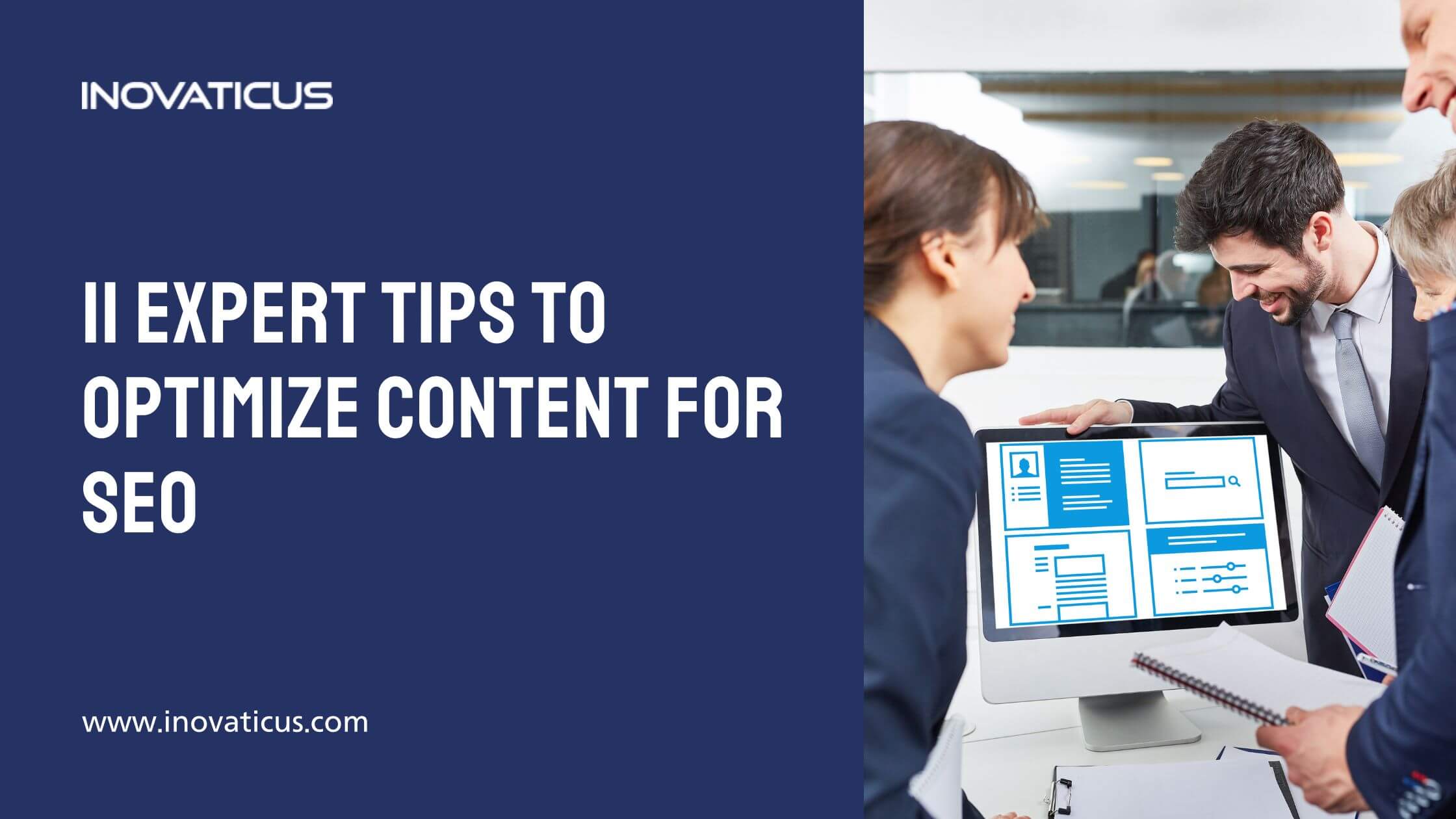Google Ads is an online advertising platform used by millions of businesses to promote their products and services on the web. If you are an entrepreneur or professional, then there are chances that you have heard about it and using it already. But are you getting the results that you desire?
Whether you are new to Google Ads or have some experience in running ads on it already, this guide will help you optimize Google Ads campaigns for better results. In this article, we will cover some intermediate-level techniques to help you make the most of your Google Ads campaigns in a quick, easy and effective way.
Table of Contents
Section 1: Campaign Creation
1. Set realistic goals and expectations
Google Ads isn’t about getting clicks. It’s about driving qualified leads and sales. The key is to understand the goal and the metric that will tell you if you’re achieving it.
The first step to optimizing google ads campaign performance is to have a well-defined goal. You want to know what you are trying to accomplish with the campaign. Is it branding? Lead generation? Sales? Once you know your goal, you can identify the metrics that will best help you reach it.
One thing we’ve noticed with Google Ads is that the more ambitious you are, the less likely you are to achieve those results. Therefore, you must set realistic goals and expectations for your Google ads campaigns. You can’t just expect a single campaign to make you millions of dollars in a month.
If you’re looking for success, you need to know what kind of return you’re expecting, how to optimize Google Ads properly, and how much time it will take to get there.
2. Know your customers well
Every effort to optimize Google Ads starts with knowing your customers.
The best way to define your customers is to create a profile for each category of customers you want to target. Hence, spend some time creating their buyer persona.
The buyer persona is a personification of your ideal customer that helps you understand what they want and what they’re looking for. For example, if you’re a painter and you want to promote your services, then depending on who is buying the paints, what’s their budget? If more people are looking for less expensive options, it might be better for you not just to put all your ads in painting categories but also in other related paint stores in competitive locations.
Knowing customer profiles allows us to keep away from placing irrelevant or conflicting ads. It will allow you to create and optimize Google Ads better than others who don’t know their customers so well.
3. Use the right ad groups
Ad groups are one of the most important parts of Google Ads and they’re the foundation for building your campaigns. Ad groups are simply sets of ad creatives (like text, image, video, or landing page) that target the same potential customers.
They can be used to organize different ads and keywords that you’ve created or to organize your ads into logical groups. Having cohesive ad groups is an effective way to create a well-structured campaign. It will also increase the quality score in Google Ads.
While creating or optimizing your campaigns, you will have to carefully plan out your ad groups. You could decide to run a variety of ads in different ad groups, but to really optimize your conversions, you’ll want to select the right ad group to target the right customers.
Another critical point to note is that if you have several ad groups in Google Ads, it can be very confusing. That’s because it can be hard to tell what type of ads are being shown on your site. A common mistake is to show ads on your website that don’t match your audience. You might think you have targeted your ads well, but you could be throwing money away. It can also be difficult to keep track of which ads are getting the most clicks. It’s worth knowing your keywords, how many impressions each ad gets, and the clickthrough rates. This will help you decide which ad group is best for your campaign.
Each ad group contains a set of keywords, and those keywords are often what determines which ads you see. Ad groups can be split into the broad match, phrase match, and exact match.
To find the right ad group, start with a broad match. Then, use the ad group to narrow down your keywords. You’ll end up adding negative keywords and phrases.
Another problem that advertisers often face is related to having too many buyer personae. If you were going to market to all these customers, which ad group would you use? How can you tell if your target customer will be interested in the ads you’re running?
The answer to this is simple: you should run ads based on your best guess as to which personae are most likely to purchase your product or service. So, if you don’t know which one you should run your ads towards, then you should be running ads toward all of them. Make sure that you are not targeting your ads towards just one persona. Otherwise, you risk the chance of missing showing your ads to many potential customers.
4. Refine your keywords
The best advice I can give you on how to find the right keywords for your online campaigns is by staying on top of what other people are doing. Get yourself involved with a Facebook Page or group related to conversions and see who has been successful in increasing their conversion rates over time. This will help you stay current on which keywords are growing, which ones aren’t as profitable, or even unnecessary keywords since they have already been showing high impact for many products/services.
Use this information, together with tools like AHREFS, SEMrush, or Ubersuggest to determine which keywords are the most relevant and profitable for your business. Then research those search terms in detail so that you can refine the ad copy around them more effectively.
Researching this will help make sure you’re showing up when people really need it and avoid those ads that will show up but do little to get results.
In some cases, this may mean changing your keywords if a competitor uses a better or more relevant keyword for their brand image instead of another word that you use on your website. For example, saying “Buy shoes” is going to generate higher click-through rates than “shoe store”. This is because people aren’t searching for the company name as much as they are searching for the shoes.
5. Avoid broad keywords
Targeting keywords that are too broad is a sure-shot way to attract irrelevant clicks and waste your budget. For example, “plumbing” is a keyword term that covers many diverse types of business. Instead, use more specific keywords like “plumber,” or even better yet, choose one of the keyword phrases listed in your search results and pick out the best-performing ad for it to serve up as an ad unit on your website.
6. Use negative keywords
Negative keywords are terms that you can add to your ad campaigns and exclude from appearing in the ads that you’re serving on Google Ads. This will ensure that they won’t appear when people search for those words or phrases.
Negative keywords work just like positive keywords, but they exclude specific words and phrases from appearing whenever you use them in an ad. Without negative keywords, ads may appear for inappropriate sites that the people who are visiting don’t intend to contact.
For example, if you’re an electronics repair service company and want to exclude unqualified automotive keywords because it’s not part of what your business does, then you can use negative keywords to make this adjustment. You can also exclude specific competitor websites from your ad groups in a similar way.
Negative keywords are more of a tactic for competition research than an actual tool, but they can significantly improve your ad’s chance of succeeding.
7. Don’t overspend by targeting too many locations & audiences
Using traditional locations and industries to target seems logical but be sure that you’re getting the best possible value for your ad dollars.
Any geographical targeting that is too broad can sometimes siphon off valuable spending from your campaigns by serving ads in highly competitive markets. If you’re spending too much in one place, be sure to check with your sales team for alternatives or create geographic markets that are more competitive at the right price point.
8. Add the FOMO factor to your ads
We all know the feeling of missing out or FOMO. The FOMO effect is what makes people purchase things in an instant, even though they have never seen the product before. They think that if they don’t buy the product right now, they will miss the chance to get it for cheap.
Advertisers are now using this feeling to boost their sales. Companies are using FOMO as a selling point for their products, especially if they are one of the few who are selling them. When they offer a limited-edition product or a flash sale, people jump in to buy the products so that they do not miss out.
You can also apply this psychological principle to optimize Google Ads. You can use it to attract more customers, or at least get them to visit your website or shop online. This is especially useful if you are running a flash sale, and you want people to buy now because you might not be able to sell it again.
9. Make your ad copies razor-sharp
The key to creating a high-converting ad copy is to make sure that it’s clear, concise, relevant, and highly attractive.
You need to know what you’re selling, and why people will want to buy it. The more your message is specific, the better you’ll be at communicating your value proposition. Make sure that your headline includes your value proposition and use the first few words of your headline to tell your reader what they should expect from your page.
The goal of your ad copy is to convince people who are on the fence about your product or service to take the leap and buy. Modern ads must know the difference between a word that clearly describes your product or service and one that just sounds convincing enough.
To do this, you need to think about the three things that are most important to your product or service: what it does, why it’s better than alternatives and how much it costs. By focusing on these three key factors, you’ll be able to write clear, compelling copy that makes it easy for readers to understand the value of your product or service.
Here is a complete breakdown of how to Write Great Ad Copy That No One Can Ignore. Read it to get a complete understanding of the things you can do to make your ads razor sharp.
Section 2: monitor and optimize Google Ads
10. Test, optimize and experiment
After your campaign goes live, you need to continuously try out new variations of your ads to find out which one works best.
There are various ways to test your ad copy and images to see what works best. To start, test your ad copy by creating two ads with the same message but different images. If you get one response and the other gets none, you know which image is better for your ad. Next, test the copy versus the image using multiple types of images, such as text-only versus a photo with text, or text-only versus a video. Another good way to test your ad is to compare the results of a mobile-friendly ad and an older version of your site.
To summarize, you can use a combination of different approaches:
- Use a different headline for your ad.
- Test different image sizes and locations in your ad.
- Make a video ad with a different theme or topic.
We’ve found that the more specific you can be in your ad copy, the more likely you are to get a click on our ad.
11. Analyze your competitors regularly
The entire online ad ecosystem works on the system of bidding. Therefore, to optimize Google Ads, you will always have to stay at the top of your game as an advertiser. Bidding competitively will help you get the most results from your ads at the least cost possible.
It’s easy to look at your competitor and think, “I’m better than them, I’m doing something right.” Instead of thinking that way, start with a “competitor analysis.” What is their product like? Do you like what you see? Is it a good fit for you? Why or why not? Take a deep dive into your competitors by going to their websites, reading the reviews they and their products have, and understanding what they are trying to accomplish. If you don’t know what your competitors are up to, you can’t really compare yourself to them or find ways to outsmart them.
In the end, you will end up losing impressions traffic and sales. The results can be devastating for your business.
Pro Tip
Competitor analysis is not a one-time activity. Keep doing competitor analysis regularly to have the most up to date knowledge about your competitors and optimize Google Ads proactively
12. Improve and expand your ad targetting
To increase your chances of converting your ad clicks into sales, you need to ensure that you’re reaching the right customers. If you’re a marketer at any level, you know the benefits of being able to accurately pinpoint and target customers based on the information you have.
The first step in this process is to understand your customer’s behavior and needs. Once you’ve figured that out, you can develop an understanding of how the customer finds what they’re looking for. Thereafter you can optimize Google Ads by improving your ad targeting.
You can get free information from Google Ads on how your ads are doing. It also allows you to choose the time period in which you want to see your conversions, making it easier to measure your performance.
13. Run ads in different languages and countries
One of the best ways to build brand awareness and create more exposure for your brand is through international ad campaigns. According to HubSpot, ads displayed in languages other than English or localized ads reach more consumers. This is because, “when people aren’t looking at ads, they see them less often. When they are looking at ads, they see them more often.” If you’re a small business owner, it can be beneficial to run ads in different languages and in other markets where your target audience resides.
Ads are typically most effective when they speak the language of the country or audience that they’re targeting. However, it’s a common mistake to assume that the same message will work equally well in all languages. So, it will be smart on your part to test the effectiveness of different messages and variations in many languages and countries.
Running international ad campaigns is also one of the best ways to build brand awareness and create more exposure for your brand.
14. Optimize Google ads and bids for mobile devices
The world is on the move, and there is a chance that more than 80% of the people who visit your website do so from their mobile phones or tablet. Hence you need to pay special attention to them.
Google Ads provides several features designed to make it easier to place and manage mobile ads. Google Ads for Mobile allows you to choose whether you want to bid on desktop or mobile search terms. You can also choose the size of your ad, from one-half of the screen to a full-screen mobile display. You can also set a maximum CPC for your campaign—and that maximum can be higher on mobile than on desktop.
15. Optimize your landing pages
A good way to optimize Google Ads is to improve the landing pages. Your landing page can have a good design, but it won’t be as effective if it doesn’t have an optimized layout. This means that it is important to use the right elements on your landing page.
The most important elements to consider when you optimize Google Ads are the headline, product images, and Call To Action (CTA).
a. Headline
The first thing you need to do is to make sure that your headline is compelling. The headline is the first thing that your visitors will see, and it is the first thing that will determine whether they keep reading your landing page or not. If your headline is boring, they will quickly close your landing page. It is also important to make sure that your headline makes sense. For instance, if you are trying to sell something, your headline should emphasize the benefit of your product and not the features of the product.
b. Page design and product image
You also need to have a good, clear design of your product image. You should make sure that you have good images with high resolution. An attractive product image gives the customers confidence that the product you are selling is of high quality and convinces them to press the buy button.
c. Call To Action
The goal of a landing page is to convert visitors into leads. The best way to accomplish this is to use a strong call to action. Your call to action should entice your potential customers to click on your link. It is best if your call to action is very specific.
You should make it clear to the potential customer why they should click on the link. Everyone is busy so if you are not specific then you may lose their interest and they will not click on your link.
Add a CTA that is enticing, direct, and specific. You will be surprised to see how the conversion rates skyrocket.
Read our article Boost Conversions With Landing Page Optimization to know about several ways to improve your landing pages. Once you know the techniques, you can not only optimize Google Ads landing pages, but any other page you may build.
16. Optimize ads with Google Ads AI
Google Ads is the world’s most popular advertising platform, and over the years Google has really improvised it to make it more powerful than ever.
One of the things that have revolutionized the ad platform is the use of AI. Google ads are now utilizing the power of machine learning to understand how to optimize Google Ads to maximize the results.
Whether you are looking to target people based on location, interest, keywords, or product attributes, Google Ads can help you find more customers and maximize your ad spend. With the new AI-powered product, advertisers can now use machine learning algorithms to personalize their ads by understanding what people are searching for and where they are searching from.
The machine learning features of Google Ads enable it to “see” your campaign, determine if it needs optimization, and then help you do just that. Another groundbreaking advancement has been the introduction of the Customer Match feature, which enables Google Ads to predict whether a consumer who clicked on your ad is likely to buy your product or service—and if they’re likely to be profitable for you.
AI is here to stay, and we expect many more changes to come going forward. So, as an advertiser, you need to get a good understanding of the AI features of Google Ads, use its smart targeting and dynamic ads features and take a look at the recommendations provided by AI in your dashboard to optimize Google Ads.
One word of caution though: do not apply all recommendations given by it blindly. After all, it is just an AI. You are the one who understands whether those are relevant for your business or not.
Conclusion
These were some of the things you can do to optimize Google Ads to maximize your ROI. While these tips are not the only ones you can use they can be a great starting point. You can surely come up with more ideas on your own and share them with us.
The key is to test and then test again, that’s how you’ll find winning formulas.
We hope that you will optimize Google Ads with these recommendations to improve the results. Don’t forget to let us know how you did. We will look forward to hearing from you!




Leave a Reply